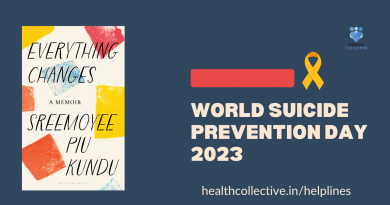Alone in the Crowd: Here’s What You Need to Know about Urban Loneliness
Alone in the Crowd: Overcoming Loneliness of Urban Living is a new book out by Dr Samir Parikh and Kamna Chhibber. Read an excerpt here and check out our e-interview with the authors.
- Can you share more on this phenomenon of urban loneliness?
Dr. Samir Parikh: Urban loneliness is a pervasive reality characterising urban city life today. Despite being in a space which has millions of people, individuals often find themselves disconnected and alone. There is a sense of being isolated in a densely populated space. This gets exaggerated on account of the kind of lifestyles that have developed and the preoccupation with gadgets which prevents people from truly connecting with each other.
- You write about a few of common themes/ trends that you’ve noticed during the pandemic. What are some of these?
Kamna Chhibber: One of the most prominent aspect that was visible during the pandemic was the struggle to take care of well-being while having to stay isolated. The removal of the social element from people’s lives did compromise their state of mental health leading to difficulties in managing their moods and thoughts. For many there was a growing state of loneliness, anxiousness, enhanced worrying about the future and experiences of significant loss – of finances, life and of people. There has been a growing acknowledgment of the need to have significant social support systems and also to discover ways to stay connected with the self.
- What should would-be readers know about this book?
Dr. Samir Parikh: The book is written in a way that it highlights the nuances that characterise where the problem of urban loneliness emerges from. It looks at not just what individuals may contribute but also explores how city life in itself, the changes in society and the way the structures that have emerged in these spaces have contributed towards the emergence of this problem. It provides solutions that are multi-dimensional, helping highlight the understanding that there is a multi-pronged solution that needs to be considered and utilises insights from the pandemic to talk about ways to cultivate mindful urban living.
- What are some key take-aways or practices we can look at?
Kamna Chhibber: The solution to loneliness lies in understanding the problem more fully. More importantly, it rests within the ability to slow down and take a reflective approach. There are simple things people can incorporate within their ways of living which can be beneficial in the long run. It starts with investing in the self and also in the relationships one does have and values. At the same time finding ways to immerse oneself in the here and now, stepping away from the constant preoccupation with gadgets are crucial aspects which need to be considered. Most importantly, we all need to work actively towards combating this silently advancing problem which plagues many within urban city dwellings.
- There’s this phenomenon of looking at “hustle” or “being busy” (busy busy busyness!) as a positive— what’s the flip side to that?
Kamna Chhibber: Staying busy has become a norm and a valued attribute without people realising the impact it has on them. The inability to say no and to prioritise what they need to do themselves can strongly compromise their mental well-being. The flip side is that in staying busy people in fact often even lose sight of what their goals are. They keep moving forward in an automatic manner without taking stock of where they are and the changes they need to bring about in order to be more effective in what they are doing.
- As we move into 2022 – what are two hopes (each) for each of your readers?
Dr. Samir Parikh: The hope is in thinking about the collective and building ways to support each other. Altruism needs to take centre stage and we need to work towards building contentment and gratitude for what we each have.
Kamna Chhibber: Focus on investing in yourself. Take stock of where you are at and actively engage in caring for yourself by cultivating the right approach, shifting away from a preoccupation with gadgets and what others do. Concurrently, bring in a more mindful way of immersing yourself in all activities you indulge in by fully being in the moment.
- What inspired you to write this book?
Dr. Samir Parikh: Increasingly over the years, I have heard people share and discuss the challenges they face in the cities they reside in and one of the most prominent issues has been that of loneliness. More importantly, this has been an aspect which young people have started speaking about even though previously loneliness was thought to be an aspect that characterised experiences of the elderly. During this pandemic it was highlighted even more strongly across the board for all age groups. This has been the silent problem that has been insidiously growing within urban spaces and needs the attention of individuals and communities alike, which is what prompted us to write this book to help people develop a comprehensive understanding of where it emerges from and what can be done in order to combat it.




